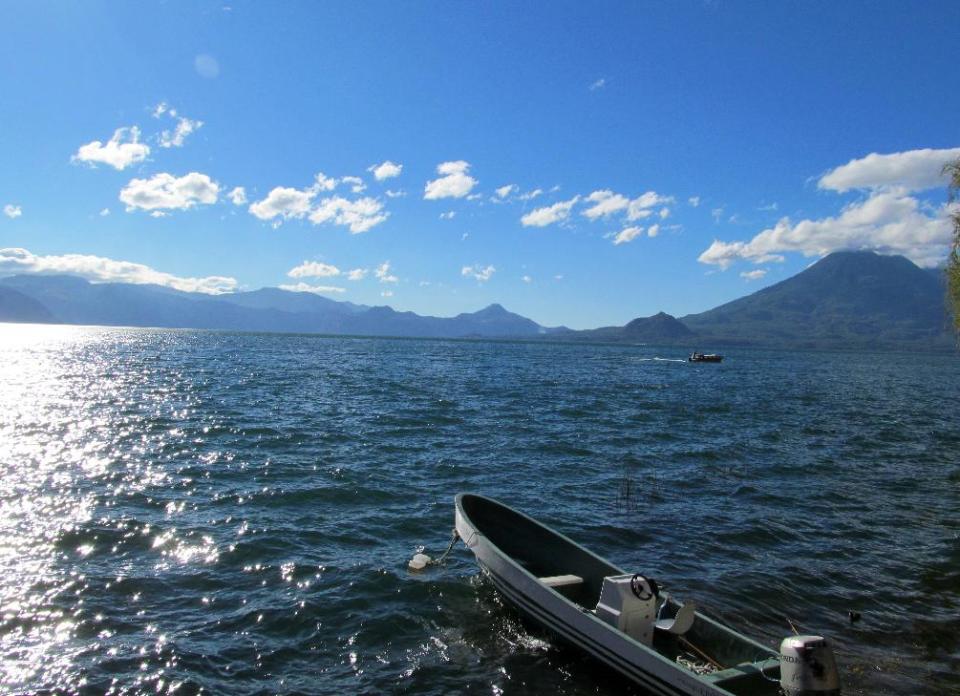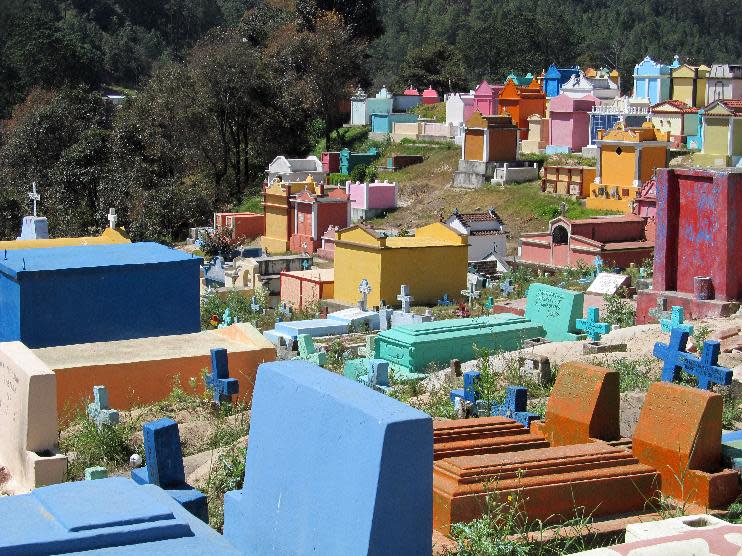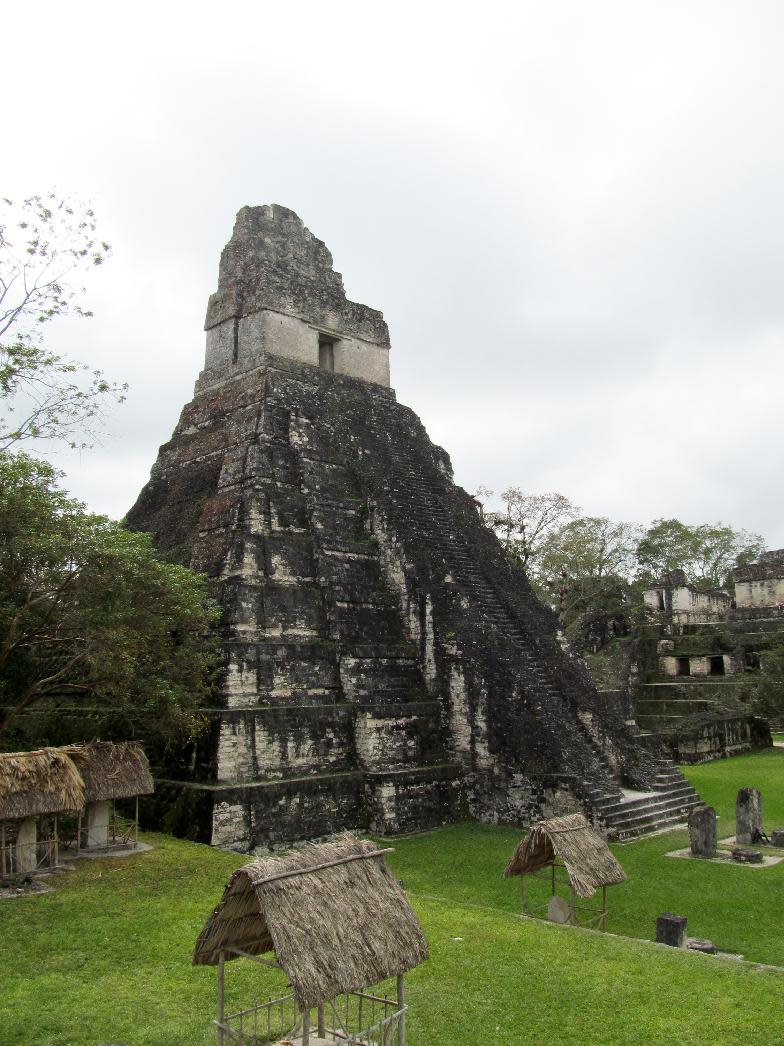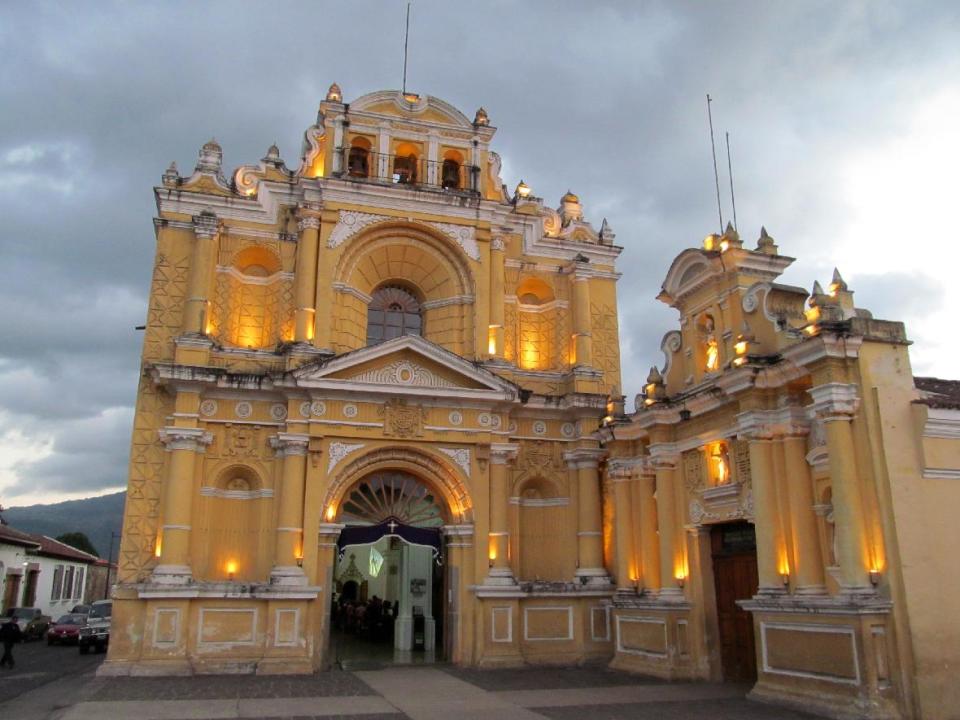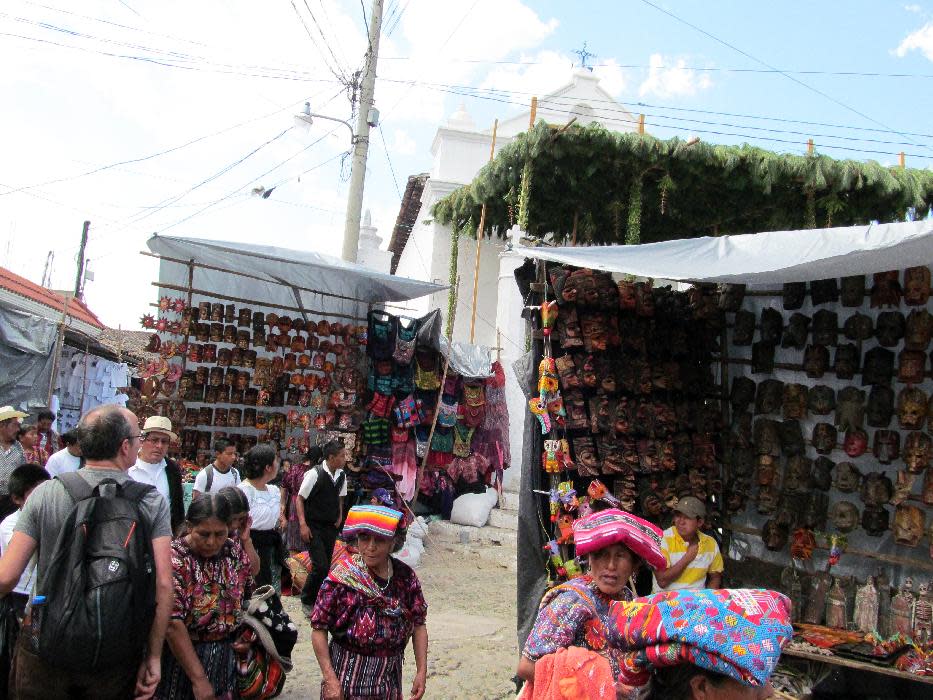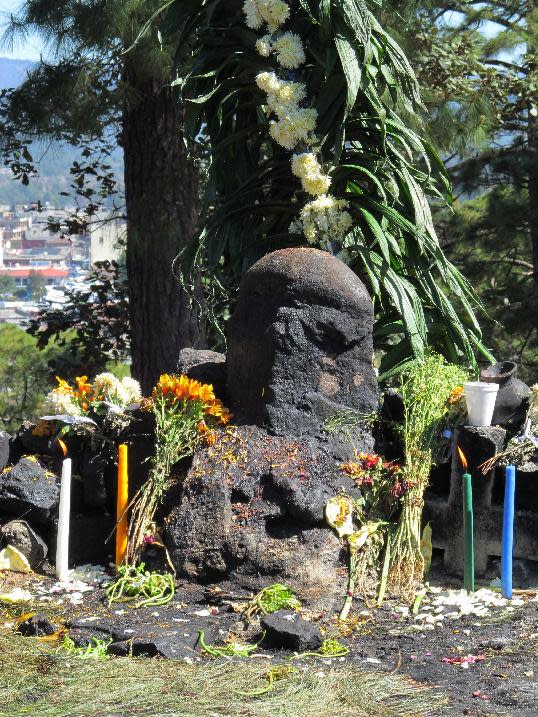Guatemala: Stay safe with careful planning
ANTIGUA, Guatemala (AP) — Everyone told me not to go.
Even a friend who lived in Guatemala for six months advised me against going.
I planned the trip and canceled it twice. But in the end I let my traveler's instincts persuade me that it couldn't be that bad. And for the most part, Guatemala seemed safer to me than what I expected. With common-sense precautions and careful planning, I minimized risks and was able to enjoy one of the most fascinating and affordable countries I've ever visited.
Guatemala has an alarming rate of homicides. Newspaper front pages often show images of covered dead bodies with police hovering nearby. But most of those crimes happen in the capital, Guatemala City. With that in mind, and the fact that Guatemala City has few tourist attractions, I skipped it altogether.
Another decision that my travel companion and I made was to stick to trusted methods of transportation. This meant no "chicken buses." These colorfully painted former U.S. school buses, which sometimes carry farmers and their chickens, are notorious for being the target of road bandits. We used shuttles, which are smaller buses that cater to tourists, or private transportation set up by our hotels. Almost every hotel has an arrangement with a driver. Both those options were quite affordable.
Arriving in the sleek La Aurora airport on the outskirts of the capital, we were whisked away by our waiting driver to Antigua, the country's former capital, and its most popular tourist destination. The ride took around 90 minutes and cost around $40 for both of us — quite reasonable, we thought.
Antigua is built on a grid of cobblestone streets and boasts one of the best collections of Spanish colonial buildings in the Americas. Strolling around at night to see the colonial churches lit up is a must. By day, you can go into many of those buildings, some of which were damaged in the city's earthquakes during the last three centuries. Several have been transformed into high-end hotels.
We ventured out to nearby Finca Filadelfia, a coffee farm and resort that offers plantation tours. Guatemala's volcanic soil produces some of the world's best coffee. The Finca tour was an in-depth look at how coffee beans are planted, harvested, selected and roasted, then shipped all over the world.
Another highlight of Antigua was climbing the active Pacaya volcano, a steep but easy two-hour hike. We went on a half-day trip with about 12 other tourists and a guide. Do not attempt the hike without a guide as muggings there are common. After the hike, your reward will be roasting marshmallows in a blistering hot hole on the side of the volcano.
From Antigua, we took a two-hour shuttle to our next destination: Lake Atitlan in the western highlands. Often compared to Italy's Lake Como, Atitlan is surrounded by several volcanoes that make the scenery breathtaking. The biggest town is Panajachel, which you can skip altogether, opting instead to stay at one of the smaller Mayan villages around the lake. We stayed in Santa Cruz La Laguna, which is only reachable by a 20-minute, $1.50 motorboat-ride from Panajachel. The longest boat ride on the lake is between Panajachel and Santiago Atitlan and takes almost an hour.
In Santiago, we ventured out to seek Maximon, a curious Mayan deity, whose effigy is housed in a different, secret building every year. Enterprising locals will offer to take you to see Maximon for a couple of dollars. While I was certainly skeptical, once located, Maximon proved to be fascinating. We watched as pious Mayans presented Maximon with bottles of Coca-Cola, beer and whiskey, seeking solutions to their problems. The offerings, we were told, are sold off and the money is used for local projects.
You can spend a day or two shuttling on local boats between the lake's small towns, each of which has a particular character. Local Mayans also use the boats to go to work and school. You can charter a private boat for about $50, but there's really no need as the local boats are perfectly safe and, frankly, more fun. The Mayans are very friendly if a bit reserved at first toward tourists. Most speak indigenous languages as well as Spanish.
From Lake Atitlan, we took a one-hour shuttle ($12) to Chichicastenango. Famed for its expansive local crafts market, Chichicastenango is the place where you can shop for colorful Guatemalan textiles. They come in an incredible variety of blankets, shawls, backpacks, throws, wall hangings, and shirts. Remember to haggle anything down to at most half of what you are quoted. Be firm but also bear in mind that sometimes the difference is $1 so know when to let go and just pay.
You can hire a local tour guide to walk you to the town's colorful cemetery where symbols of Catholicism and Mayan faiths mix. You can also have the guide take you to one of the locations where outdoor prayer services are performed before Mayan deities. Don't attempt either without a guide as robberies are common in the outskirts of town.
With the post-Columbian sights behind us, it was time for the Mayan ruins of Tikal in the country's north. The usual trek to this remote part of Guatemala involves an overnight bus ride. Short of time and wary of reports that those nighttime buses are easy crime targets, we chose to take the 45-minute flight from Guatemala City.
Our hotel in Antigua recommended a local guide to us in the region and he accompanied us throughout our two days there. We followed his suggestion and kept Tikal for our last day, choosing to spend our first one in Yaxha, a smaller Mayan site that was the setting for the reality TV show "Survivor: Guatemala." Yaxha was constructed from a light-colored limestone that gives its buildings a unique hue. Sunset views from the top of the site's tallest structure, numbered 216, are stunning.
On our last day, we started at 6 a.m. to beat the crowds to Tikal, one of the best-preserved Mayan sites in the world. Spread over 220 square miles, Tikal encompasses thousands of structures in addition to a primary tropical forest and a variety of wildlife. It boasts stunning architectural constructions such as Temple I, which has become a symbol of Guatemala. There are also palaces, a jail, several sport complexes, burial tombs, and a canal system. It was clear why our guide wanted to save this for last. You appreciate more the amazing size of Tikal after first seeing the smaller Yaxha.
No visit to any country is ever complete without experiencing the local food. While the variety of local dishes isn't huge, don't leave Guatemala without trying pepian, a spicy brown-sauce chicken stew that is a national dish. Fried chicken aficionados will revel in the joys of the famous local fast-food chain Pollo Campero. You are never too far from a location. Once you try it, you will understand why Guatemalans carry sealed boxes of the delicious stuff from the Guatemala City airport outlet all the way to their loved ones back in the U.S. Finally, to cool off, try licuado, a cold drink made with fresh fruit that is ubiquitous in the country.
___
If You Go:
GETTING THERE: American, Delta, Spirit and United Airlines offer nonstop flights to La Aurora International Airport in Guatemala City from U.S. hubs. TACA flies twice daily between La Aurora and Mundo Maya Airport in Flores, the gateway to Tikal and north Guatemala.
HOTEL AND GUIDES: Most hotels in Guatemala do not have their own websites and take their time replying to emails or phone reservation requests, so don't be alarmed if you don't hear back in a day or two. A good source for hotel recommendations is the Moon travel guidebook. We enjoyed stays at Posada del Cerro on Calle Jobompiche near Tikal, mailto(at)posadadelcerro.com or 502-5376-8722; Isla Verde on Lake Atitlan, a hillside, eco-cabin hotel, http://islaverdeatitlan.com , and Posada San Sebastian in Antigua, 502-7832-2621 or snsebast(at)hotmail.com. Ask your hotel to recommend local tour guides and safe transportation. An excellent English-speaking guide and driver in Tikal and Yaxha was Israel Lima, 502-5713-1418 or israellima_1972(at)hotmail.com.
FINCA FILADELFIA: Coffee farm tours and resort: http://www.filadelfia.com.gt .
CASH AND CURRENCY: ATMs are abundant but take precautions by using machines in well-lit locations and stash your cash quickly in multiple pockets. Daily limit of $250 per card. Prices for tours, hotels, etc. are often quoted in U.S. dollars. You can pay in U.S. dollars or the local currency, quetzals (about eight quetzals to $1).

